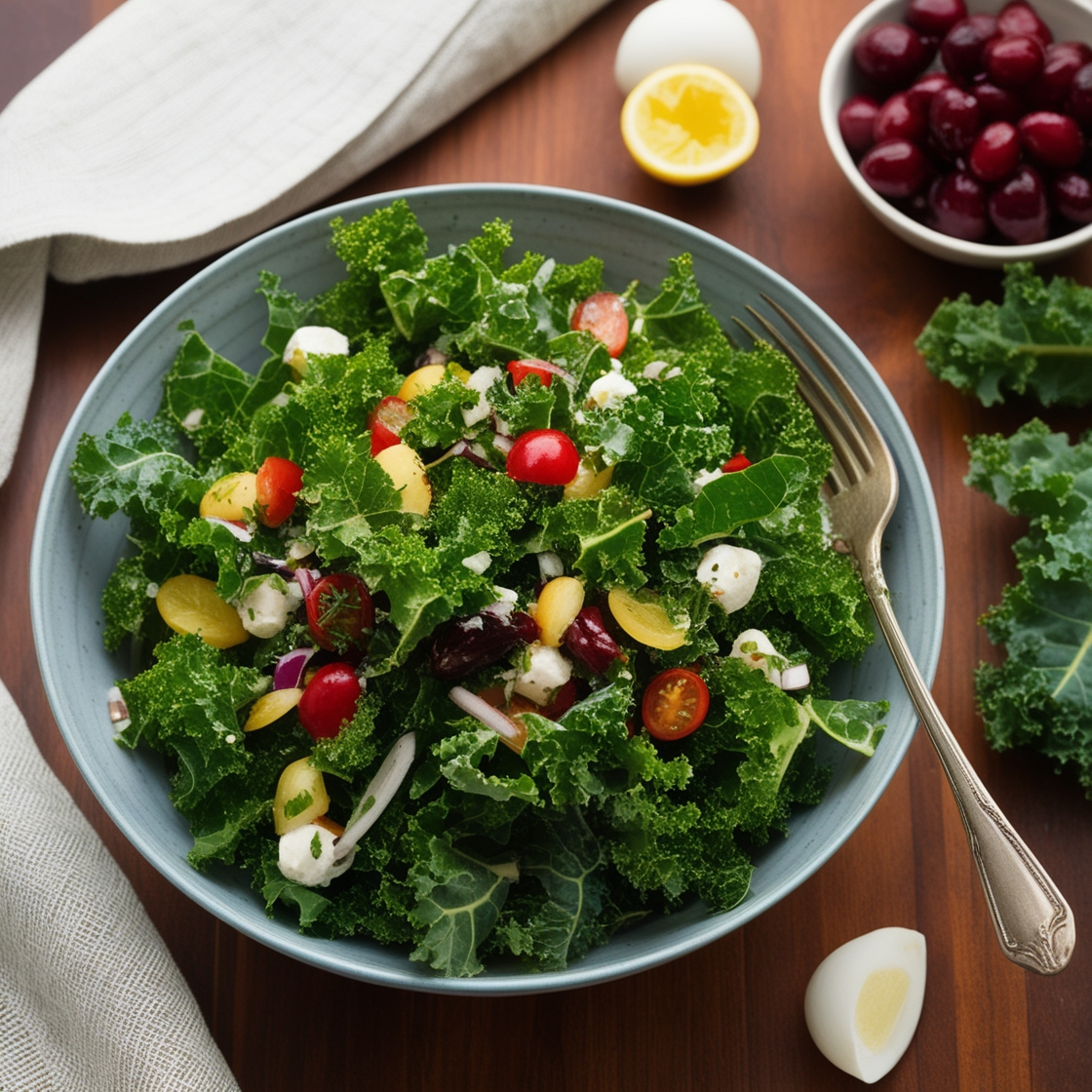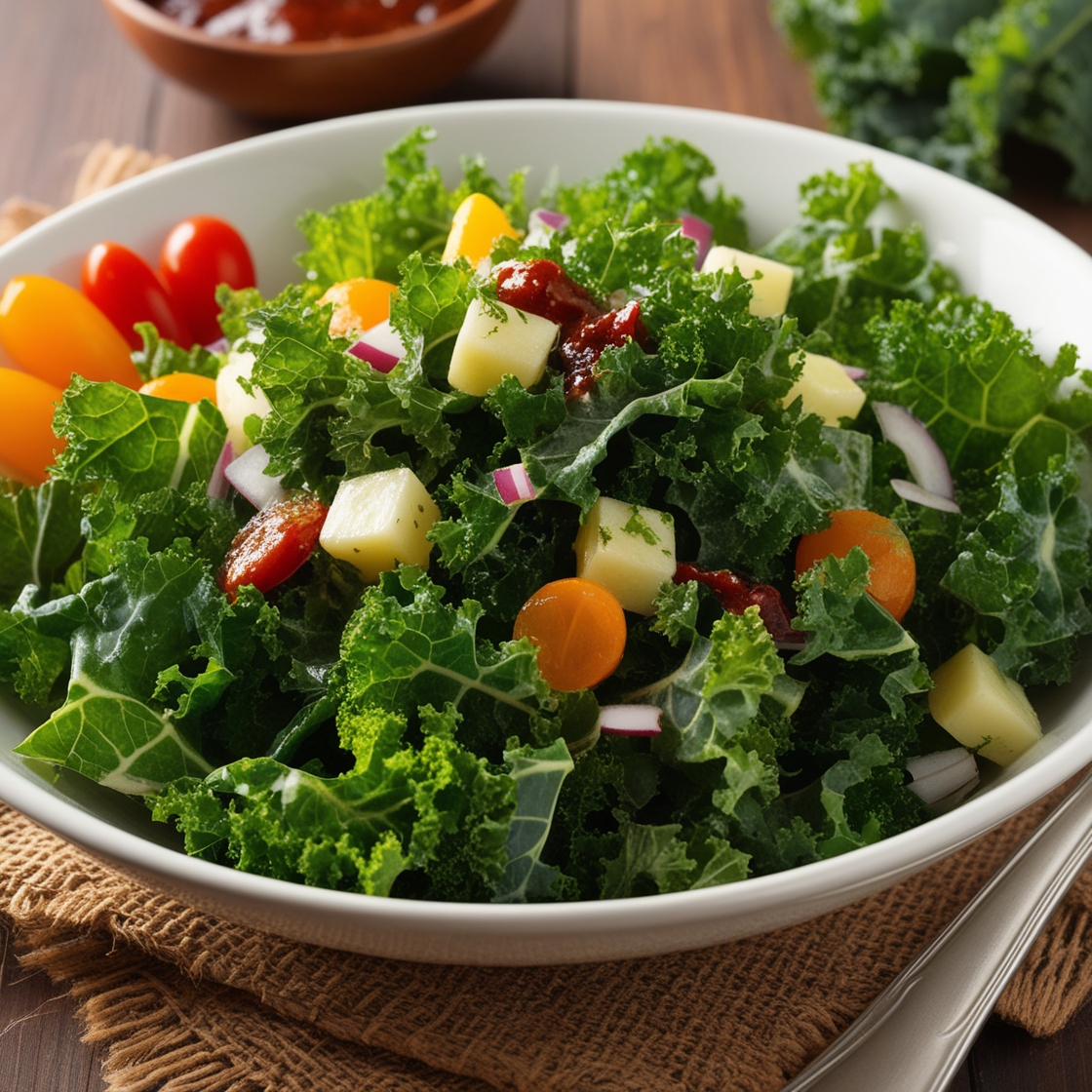Kale salad has become a beloved staple in the world of healthy dining, frequently featured on menus of trendy restaurants and cafes. Not only does it boast vibrant colors and fresh flavors, but it is also packed with an array of nutrients that promote overall health. The good news is that you don’t have to dine out to enjoy this delightful dish. By making your own restaurant-style kale salad at home, you can customize it to your liking, control the ingredients, and save money in the process. In this comprehensive guide, we’ll delve into the nutritional benefits of kale, the essential ingredients for creating a perfect salad, detailed preparation steps, answers to common questions, and expert tips to enhance your culinary skills.
Main Body
1. Nutritional Value of Kale
Kale is often heralded as one of the healthiest leafy greens, and for good reason. Here’s a deeper look into its nutritional profile and health benefits:
- Vitamins and Minerals: Kale is an excellent source of vitamins A, C, and K. Vitamin A is vital for maintaining healthy vision, vitamin C supports immune function and skin health, while vitamin K plays a crucial role in blood clotting and bone health. Just one cup of kale contains more than 200% of the recommended daily intake of vitamin K.
- Antioxidants: This leafy green is rich in antioxidants such as quercetin and kaempferol, which help combat oxidative stress and inflammation in the body. These antioxidants may also reduce the risk of chronic diseases, including heart disease and certain cancers.
- Fiber Content: Kale is high in dietary fiber, which aids in digestion and helps maintain a healthy gut. Consuming fiber-rich foods can also help control blood sugar levels and promote a feeling of fullness, making it a great choice for weight management.
- Low Caloric Density: With its low calorie count—approximately 33 calories per cup—kale is an excellent option for anyone looking to eat healthily without consuming excess calories. This makes it an ideal base for a salad that can be both satisfying and nutritious.

2. Essential Ingredients
Creating a delicious restaurant-style kale salad requires a thoughtful selection of ingredients. Here’s what you’ll need:
- Kale: 200g (preferably organic). Lacinato (dinosaur) kale is a fantastic choice for its tender texture and mild flavor. Curly kale is also a great option but may require a bit more massaging to soften.
- Additional Vegetables: A colorful array of veggies can enhance both the flavor and nutritional value of your salad. Consider adding:
- Carrots: Shredded for sweetness and crunch.
- Cucumbers: Diced for a refreshing bite.
- Bell Peppers: Sliced in various colors to boost visual appeal and nutrients.
- Dressing Ingredients:
- Olive Oil: 3 tablespoons for a rich, healthy fat that helps absorb fat-soluble vitamins.
- Balsamic Vinegar: 1 tablespoon adds a tangy depth that complements the kale.
- Honey or Maple Syrup: 1 tablespoon for a touch of natural sweetness to balance the acidity.
- Salt and Pepper: To taste, enhancing all the flavors in the salad.
- Nuts and Seeds: A handful of walnuts or sliced almonds adds healthy fats, protein, and crunch. You can also include seeds like pumpkin or sunflower for added nutrition.
- Cheese (optional): Grated Parmesan or crumbled feta cheese provides a creamy texture and a burst of flavor that elevates the salad.
- Protein (optional): For a more substantial meal, consider adding grilled chicken, chickpeas, or roasted tofu to the salad.

3. How to Make Kale Salad
Step 1: Prepare the Ingredients
- Wash the Kale: Rinse the kale thoroughly under cold water to remove any dirt or pesticides. Tear the leaves into bite-sized pieces, discarding any tough stems.
- Chop the Vegetables: Prepare your additional vegetables by slicing or shredding them. Aim for uniform sizes to ensure even distribution throughout the salad.
Step 2: Make the Dressing
- In a small bowl, whisk together the olive oil, balsamic vinegar, honey, salt, and pepper until well combined. Adjust the seasoning according to your taste preference.
Step 3: Toss the Salad
- In a large mixing bowl, combine the kale and your chopped vegetables. Drizzle the dressing over the top, and use your hands or a large spoon to toss everything together. This is an important step—gently massage the kale for about 2-3 minutes to help break down the fibers, making it more tender and flavorful.
Step 4: Add Nuts, Cheese, and Protein
- Once the kale is well-coated with the dressing, sprinkle your choice of nuts on top, along with the grated cheese if desired. For a protein boost, add grilled chicken or chickpeas. Toss the salad one last time to incorporate all the toppings.

4. Frequently Asked Questions
- Can I substitute kale with another vegetable?
- Yes! If you prefer a different taste or texture, spinach, arugula, or even mixed greens are excellent alternatives. Each will bring its unique flavor to the salad.
- Can I prepare the salad in advance?
- You can prepare the kale and chopped vegetables ahead of time. However, it’s best to add the dressing just before serving to maintain freshness and prevent the greens from wilting.
- Is this salad suitable for meal prep?
- Absolutely! This salad can be stored in the refrigerator for 2-3 days if kept undressed. Just remember to pack the dressing separately to keep the greens crisp.
- Can I add fruits to the salad?
- Definitely! Adding seasonal fruits like sliced apples, pears, or berries can enhance the flavor and add natural sweetness. They also provide additional vitamins and antioxidants.
5. Tips for the Perfect Salad
- Soak the Kale: Soaking kale in cold water for about 10 minutes can help soften the leaves and enhance their crispness. This step can make a significant difference in texture.
- Experiment with Herbs: Fresh herbs like parsley, cilantro, or basil can add a burst of flavor. Chop them finely and mix them in for a refreshing twist.
- Incorporate Grains: For a more filling salad, consider adding cooked quinoa, farro, or brown rice. These grains add texture, protein, and fiber.
- Use Seasonal Ingredients: Incorporate seasonal vegetables and fruits to take advantage of peak flavors and nutritional benefits. Ingredients like roasted butternut squash in the fall or fresh berries in the summer can elevate your salad.
- Try Different Dressings: While the balsamic dressing is a classic, don’t hesitate to experiment with other dressings such as tahini, lemon vinaigrette, or a creamy yogurt dressing to match your mood.
- Presentation Matters: Take the time to plate your salad beautifully. A well-presented dish can enhance the dining experience and make your homemade salad feel like a gourmet meal.

Conclusion
Creating a restaurant-style kale salad at home is not only a rewarding culinary experience but also a fantastic way to incorporate more nutritious ingredients into your diet. With its plethora of vitamins, minerals, and fiber, kale is the perfect base for a delicious, health-boosting salad. Armed with the knowledge and tips provided in this guide, you can easily whip up this delightful dish and tailor it to suit your tastes and dietary preferences. So gather your ingredients, unleash your creativity, and enjoy the satisfaction of making a wholesome salad that rivals any restaurant’s offering! Whether for a lunch, dinner, or as a side dish, your homemade kale salad is sure to impress and nourish. Happy cooking!

